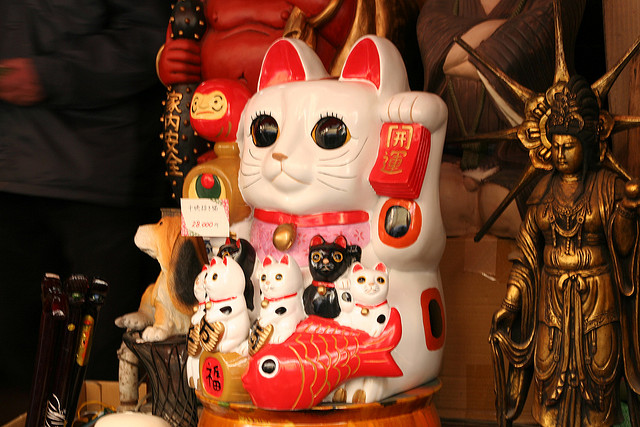Many investors are pessimistic about China’s economy, largely because they don’t realize how much China’s economy has changed.
China’s old economy looks weak. Exports are down by about 3% through November, compared to an increase of 6% a year ago. Industrial production is up 6%, compared to 8% a year ago. Fixed asset investment has increased 10%, down from a 16% growth rate during the same period last year. But are those the parts of the economy you want to focus on, or invest in?
Not an Export-led Economy
Exports, for example, haven’t contributed to GDP growth for the past seven years. I estimate that only about 10% of the goods rolling out of Chinese factories are exported. China largely consumes what it produces.
Manufacturing is sluggish, especially heavy industries such as steel and cement, as China has passed its peak in the growth rate of construction of infrastructure and new homes. But manufacturing has not collapsed, with a private survey revealing that factory wages are up 5% to 6% this year, reflecting a fairly tight labor market, and more than 10 million new homes will be sold in 2015.
More importantly, few investors recognize that this is almost certain to be the third consecutive year in which the manufacturing and construction part of the economy will be smaller than the consumption and services part. China has rebalanced away from a dependence on exports, heavy industry and investment, and has become the world’s best consumption story.
Understanding this dramatic shift is key to assessing the impact of China on the global economy, and on your portfolio.
We are All China Investors
Even if you never own a Chinese equity, you are effectively a China investor. China accounts for about one-third of global growth—greater than the combined shares of the U.S., Europe and Japan.
This helps explain why U.S. exports to China have increased by more than 600% since it joined the WTO, while U.S. exports to the rest of the world rose by less than 100%.
Most GDP Growth from Consumption
The rebalancing is driven by Chinese consumers, with consumption accounting for 58% of GDP growth during the first three quarters of this year.
Shrugging off the mid-June fall in the stock market, real (inflation-adjusted) retail sales actually accelerated to 11% in October and November, the fastest pace since March.
Spending Driven by Strong Income Growth
Unprecedented income growth is the most important factor supporting consump¬tion. In the first three quarters of this year, real per capita disposable income rose more than 7%, while over the past decade, real urban income rose 137% and real rural income rose 139%. Some of that increase was driven by government policy: the minimum wage in Shanghai, for example, rose 187% over the past 10 years. (In the U.S., real per capita disposable personal income rose by about 8% over the last 10 years.)
And it is worth noting that one reason that the fall in the A-share market didn’t depress Chinese consumers is that although the market is down sharply from its recent peak, the story isn’t quite as bad as some make it out to be. As of the December 15, 2015 close, the Shanghai Composite Index was down 32% from its June 12 peak. But the index was up 9% from the start of the year, and it was up 20% from a year ago. Thus, the Shanghai Composite Index is outperforming the S&P 500 Index on a year-to-date basis (with the S&P 500 down 1% as of December 15) and on a one-year basis (with the S&P 500 up 6%).
Rebalancing needs time
We need to accept and understand, however, that the necessary restructuring and rebalancing of China’s economy, along with changes in demographics and the law of large numbers (two decades of 10% growth), does mean that almost every aspect of the economy will continue to grow at a gradually slower year-on-year pace for the foreseeable future. The strong consumer story can mitigate the impact of the slowdown in manufacturing and investment, but it can’t drive growth back to an 8% pace.
So while the growth rates of most parts of the economy are likely to continue to decelerate gradually, keep in mind that this year’s “slow” pace of 6.9% growth, on a base that is about 300% bigger than it was a decade ago (when GDP growth was 10%) means that the incremental expansion in China’s economy this year is about 60% bigger than it was back in the day.
Larger Opportunity
In other words, the lower growth rate is generating a larger opportunity for companies selling goods and services to Chinese, and for investors in those companies.
Andy Rothman is Investment Strategist at Matthews Asia.




